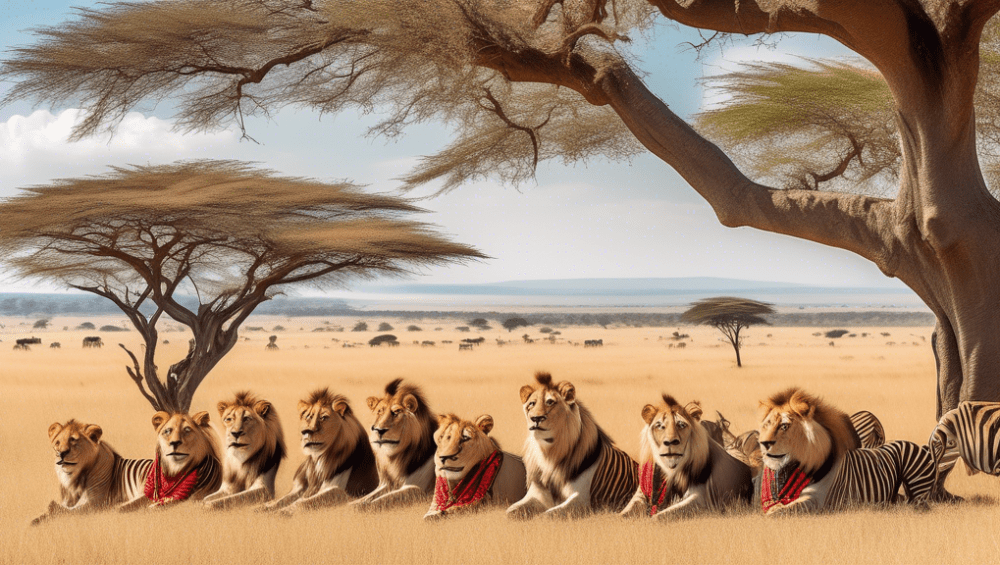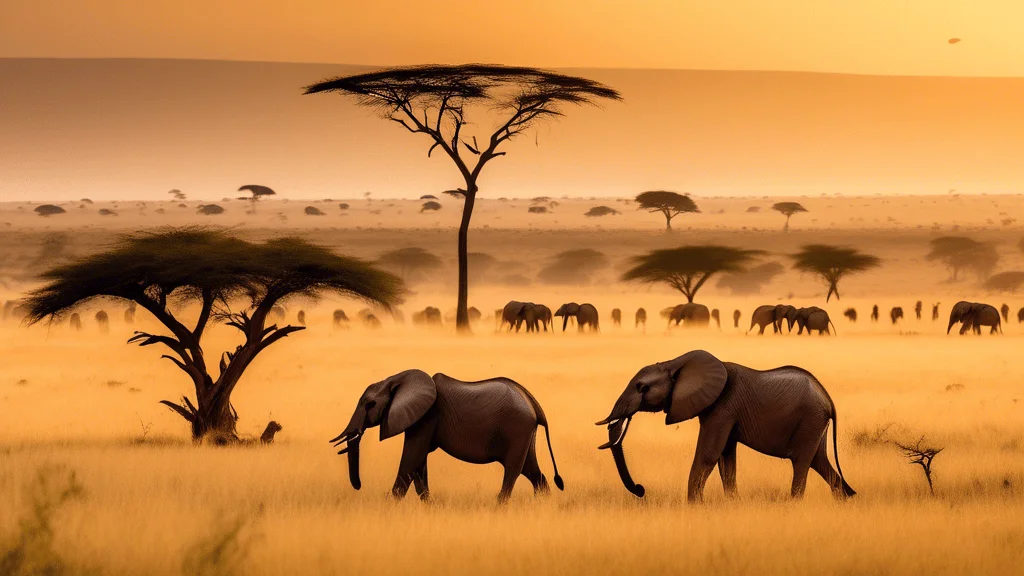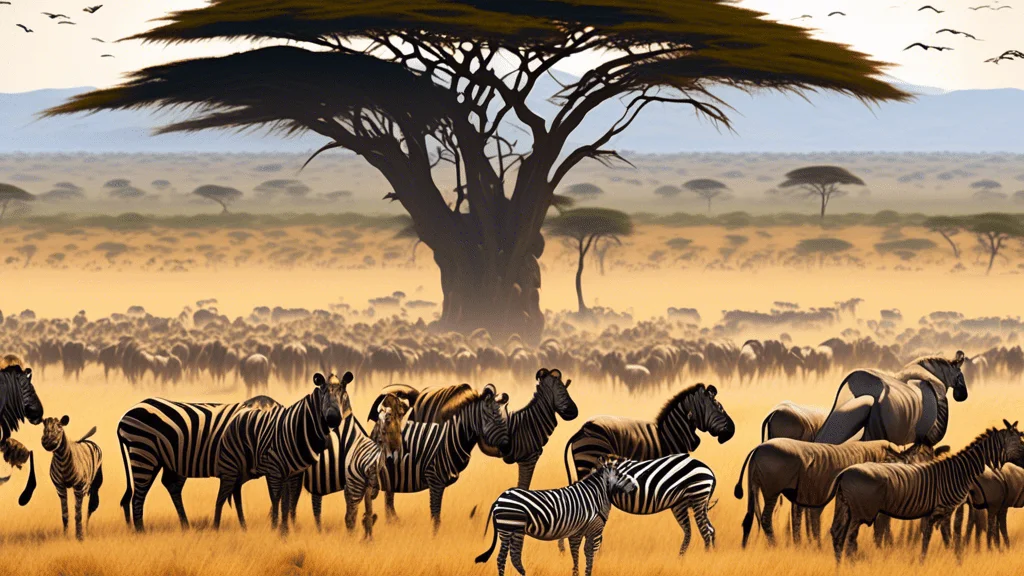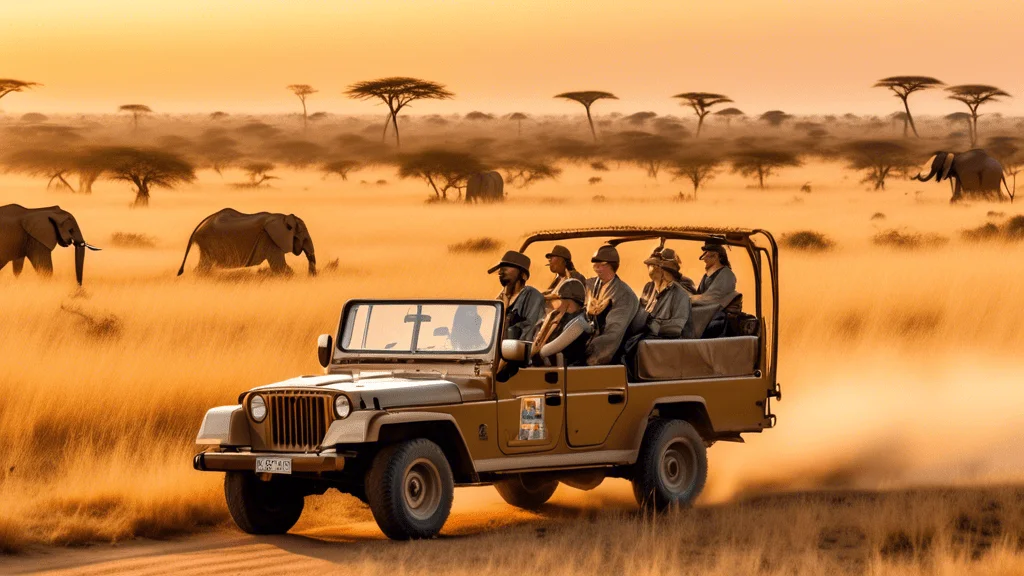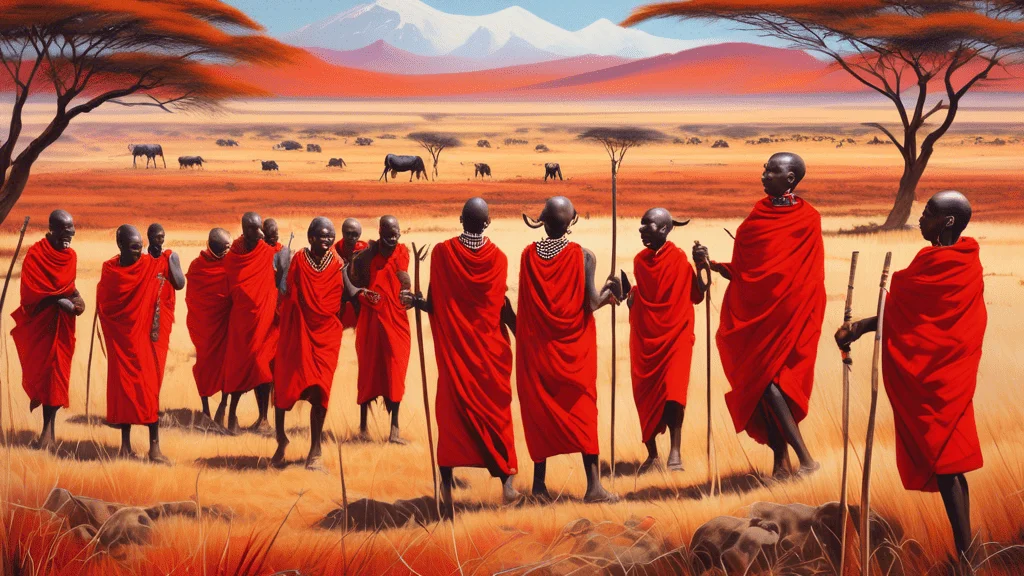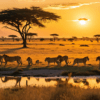Introduction to the Maasai Mara
Have you ever dreamed of witnessing the raw beauty of nature, where majestic animals roam free against a backdrop of expansive savannas? Well, welcome to the Maasai Mara, kenya Kenya’s premier safari destination! Picture yourself in the heart of Africa, surrounded by breathtaking landscapes, vibrant wildlife, and a rich tapestry of culture and history. The Maasai Mara isn’t just a travel destination; it’s an experience that will leave you in awe and yearning for more.
Considered one of the finest wildlife reserves in the world, the Maasai Mara spans over 1,500 square kilometers and is renowned for its dense populations of game animals, most notably the Big Five – lions, elephants, leopards, buffalo, and rhinos. But wait, there’s more! The Maasai Mara also plays host to the Great Migration, where millions of wildebeest and zebras traverse the plains in a dramatic life-and-death journey. Intrigued yet?
Beyond its natural splendor, the Maasai Mara holds immense historical and cultural significance. The name itself is a tribute to the indigenous Maasai people, whose vibrant culture and age-old traditions add another layer of depth to any safari expedition. The Maasai have coexisted with the land and its creatures for centuries, and their stories, dances, and crafts offer a fascinating glimpse into a way of life that remains deeply connected to nature.
If you’re looking for a destination that blends extraordinary wildlife encounters with rich cultural experiences, the Maasai Mara should be at the top of your list. So, pack your bags, grab your camera, and get ready for an adventure like no other. Ready to dive deeper into this incredible safari destination? Let’s explore further!
Introduction to the Maasai Mara
Brief Overview of the Maasai Mara
Imagine a sprawling savannah, dotted with acacia trees and teeming with wildlife. That’s the Maasai Mara for you. Nestled in the southwest of kenya Kenya, this iconic reserve stretches over 1,510 square kilometers and seamlessly connects with tanzania Tanzania’s Serengeti National Park. The Maasai Mara, often simply called ‘The Mara,’ is named after the indigenous Maasai people and the Mara River that meanders through the park.
Ever wondered why the Maasai Mara boasts such a magnetic pull for travelers worldwide? Well, it’s the sheer density and diversity of wildlife that sets it apart. From the ‘Big Five’ – lions, elephants, leopards, rhinos, and buffaloes – to an astounding variety of birds, the Mara is a rich tapestry of ecological wonder. This isn’t just safari; it’s an immersive experience that taps into something deeply primal and awe-inspiring within us.
Importance as a Top Safari Destination in kenya Kenya
Why do people flock to the Maasai Mara from every corner of the globe? The short answer: It’s simply one of the best safari destinations on Earth. If you’re anything like me, your first safari is a life-changing event. I remember my first game drive, heart pounding, as a lioness strolled casually past our vehicle. That’s the kind of up-close moment you can expect here. Whether you’re a seasoned traveler or a safari newbie, the Mara has something for everyone.
What seals the deal for many visitors is the predictability. Unlike some safari destinations where wildlife sightings can be hit-or-miss, the Maasai Mara rarely disappoints. The wildlife congregates in such high numbers that spotting game becomes more the rule than the exception. And let’s not forget about the Great Migration, which we’ll get into later. It’s nature’s grandest spectacle that alone makes the journey worthwhile.
Historical and Cultural Significance of the Maasai Mara Region
Before you dive into the wild beauty and adventure that the Maasai Mara offers, it’s enriching to know a bit about its history and cultural significance. This place is not just about the animals; it’s about the people too. The Maasai, semi-nomadic people, have lived here for centuries. Recognizable by their distinctive shukas (colorful blankets), the Maasai are as iconic as the wildlife itself. Their culture and traditions have remained resilient and relatively unchanged over the years, providing a rich, living tapestry of human history alongside natural splendor.
Ever thought about what it’s like to live in harmony with nature’s raw power? The Maasai have mastered this, grazing their cattle in these lands while maintaining a deep respect for wildlife. Their knowledge of the environment and the animals within it is unparalleled. Taking a cultural tour with a Maasai guide isn’t just educational; it’s a deeply humbling experience. I remember being shown different medicinal plants and learning how every herb and stone has a role to play in their lives.
In the early 1900s, when European settlers arrived, the Maasai Mara was seen primarily as a beautiful, untamed land. Initially, there was little understanding of the Maasai culture or the ecosystem’s complexity. Thankfully, today’s conservation efforts often integrate Maasai knowledge, showcasing a more holistic approach to wildlife and land management.
So, when you visit the Maasai Mara, remember, it’s not just a destination – it’s a legacy of natural wonder and human resilience. As you plan your trip, think of how you can engage meaningfully with both the environment and the Maasai people, contributing to the area’s longevity and their way of life. After all, the magic of the Maasai Mara lies not just in the landscapes and animals, but also in its rich cultural heritage.
Wildlife and Biodiversity in the Maasai Mara
Overview of the Diverse Wildlife Species Found in the Maasai Mara
Picture this: an expansive savannah teeming with the most incredible variety of animals. If you’ve ever flipped through a National Geographic magazine or dreamed about an African safari, you’ve likely seen images of the Maasai Mara’s awe-inspiring wildlife. From the big cats like lions, cheetahs, and leopards to the massive herds of elephants, giraffes, and zebras, the Maasai Mara is a veritable zoo in the wild.
One of the most exciting things I experienced on my trip was spotting the “Big Five” – a term originally coined by big-game hunters but now a thrilling checklist for safari-goers: lions, leopards, rhinos, elephants, and Cape buffalo. It’s practically a rite of passage to see these majestic creatures in their natural habitat.
But the wildlife doesn’t stop at just the iconic species. The Maasai Mara is also home to over 450 bird species, from the mighty ostrich to the colorful lilac-breasted roller. Each corner of the park reveals a new surprise, and the diversity will leave you in constant awe.
The Great Migration: A Natural Spectacle
Now, let’s talk about one of the most mind-blowing spectacles you’ll ever witness: the Great Migration. Imagine millions of wildebeest, zebras, and gazelles moving in unison across the plains, driven by the primal need to find fresh grazing grounds and water. This incredible journey starts in the neighboring Serengeti in tanzania Tanzania, crossing into the Maasai Mara around July.
During this journey, these animals brave crocodile-infested rivers, predators lying in wait, and the arduous challenges of the landscape. It’s raw, it’s brutal, and it’s utterly mesmerizing. If you time your visit right, you can witness this jaw-dropping event, which has earned the Maasai Mara a top spot on many travelers’ bucket lists.
I remember standing on the edge of the Mara River, heart racing, as I watched wildebeest after wildebeest take the plunge, facing crocodiles lurking below the surface. You can’t help but root for them. It’s a humbling and awe-inspiring reminder of the circle of life.
Conservation Efforts and Sustainable Tourism Practices in the Park
With all this talk of wildlife, it’s essential to mention the efforts being made to conserve this magnificent ecosystem. The Maasai Mara faces numerous threats, from poaching to human-wildlife conflict and the pressures of tourism. Thankfully, various organizations are working tirelessly to ensure the park’s future.
Many lodges and camps in the Maasai Mara are committed to sustainable tourism practices, aiming to minimize their environmental impact. They use solar power, have policies to reduce waste, and support local conservation projects. By choosing to stay at these eco-friendly establishments, you’re not just having a memorable experience but also contributing to the preservation of this unique habitat.
Organizations like the Mara Conservancy and the kenya Kenya Wildlife Service are at the forefront of protecting the park. They work with local communities, enforcing anti-poaching laws and promoting education about the importance of conservation. On my visit, learning about these efforts gave me hope and made my experience even more meaningful. Knowing that my safari was a part of a broader effort to protect these incredible landscapes was truly gratifying.
Have you ever thought about how your choices as a tourist can impact the places you visit? Next time you’re planning a trip to the Maasai Mara, consider how you can contribute to these ongoing conservation efforts. By making simple, mindful decisions, you become part of the solution, helping ensure the Maasai Mara remains a thriving home for its wild inhabitants.
So, are you ready to witness the grandeur of the Maasai Mara and its unparalleled biodiversity? Whether it’s your lifelong dream or a newfound adventure, the Mara promises an experience that’s as thrilling as it is enlightening. And who knows? Maybe you’ll leave with a deeper appreciation for our planet’s incredible natural heritage.
Best Time to Visit the Maasai Mara
Detailed Guide on the Best Times of the Year to Visit
When it comes to planning a trip to the Maasai Mara, timing can make all the difference. This remarkable destination boasts unique spectacles and experiences year-round, but some periods stand out more than others.
First up, let’s talk about the dry season, which runs from late June to October. This period is often touted as the best time to visit the Maasai Mara. Why? Well, it’s during this season that the Great Migration typically occurs. Imagine thousands of wildebeests crossing the Mara River – it’s a National Geographic moment in real life! Besides the Migration, wildlife spotting is generally easier in the dry season. Animals tend to gather around water sources, creating prime viewing opportunities.
Climate Conditions and What to Expect During Different Seasons
So, what about the climate itself? The dry season offers more than just incredible wildlife views; it also comes with pleasant weather. Days are sunny and temperatures range from 20°C (68°F) to 30°C (86°F). Evenings can get quite chilly, so don’t forget a warm layer or two. Now, bear in mind that this is also the peak tourist season. The benefits definitely outweigh the crowds, but it’s something to consider.
Moving on to the rainy seasons, you’ll find the Maasai Mara experiences two of them: the long rains from March to May, and the short rains in November and December. The long rainy season can be less ideal for a safari. Roads can get muddy, making travel trickier, and the wildlife is more dispersed. However, the landscape transforms into a lush, green paradise. For those willing to brave the rain, this can be a beautiful and peaceful time to visit, with fewer tourists around.
The short rainy season, in contrast, is a bit of a mixed bag. The rains are usually lighter and often occur in the late afternoons or evenings. Wildlife is still relatively easy to spot, and the park isn’t as crowded as during the dry season. Plus, the short rains mean you get the best of both worlds: vibrant landscapes and decent wildlife viewing with fewer folks around.
Peak Tourist Seasons vs. Off-Peak Periods
Let’s break it down in terms of crowds now. As mentioned earlier, the dry season (June to October) is the peak tourist season. Accommodations and tours can get booked up fast, and prices tend to be higher. But with the migration and generally fantastic weather, it’s a trade-off many are willing to make. I mean, would you pass up the chance to see a lion stalking its prey in broad daylight?
The off-peak periods, encompassing the rainy seasons, present a different charm. Accommodations are more affordable, and you’re likely to enjoy a quieter, more intimate safari experience. Plus, photographic opportunities abound with those dramatic, stormy skies and verdant landscapes. If you’re an avid photographer, this could be your golden window.
Now, if you’re a shoulder-season traveler (lucky you), consider visiting the Maasai Mara in January and February. These months sit comfortably between the two rainy seasons. The weather is still quite good, the landscapes are fresh from the short rains, and tourist numbers are lower compared to the peak season. It’s a sweet spot that offers a balanced blend of both worlds.
To sum it up, the best time to visit the Maasai Mara largely depends on what you’re after. Whether it’s witnessing the drama of the Great Migration, capturing the landscape in its lush glory, or simply enjoying a serene, uncrowded safari, there’s a season tailor-made for your adventure. Trust me, whenever you choose to go, the Maasai Mara promises an unforgettable experience.
Safari Experience: What to Expect
Types of Safaris Available
When you think safari, what comes to mind? For many, it’s the classic game drive. Picture this: you’re in an open-top vehicle, the wind tousling your hair, with a knowledgeable guide pointing out lions, elephants, and giraffes out in the stunning kenya Kenyan savannah. Game drives are the most popular way to explore the Maasai Mara and usually take place in the early morning or late afternoon when the animals are most active.
But the adventure doesn’t stop there. Ever considered a walking safari? It might sound a bit intimidating — after all, aren’t safaris synonymous with staying inside a vehicle? But trust me, stepping out on foot adds a raw and exhilarating element to your African adventure. Walking safaris bring you closer to the land, the flora, and the subtle signs of animal activity that you’d typically miss from a vehicle. Expert guides ensure your safety while revealing the intricate details of the Mara’s ecosystem.
And let’s not forget about hot air balloon safaris. Have you ever dreamed of seeing the African plains from above, at sunrise? It’s like floating over an endless sea of golden grass, with herds of zebras and wildebeest dotting the landscape below. Balloon safaris usually culminate in a champagne breakfast out in the bush — yes, it’s as magical as it sounds.
Accommodation Options: From Luxury Lodges to Budget Campsites
Whether you’re traveling like royalty or on a shoestring budget, the Maasai Mara has you covered. Fancy a bit of luxury? There are high-end lodges offering world-class amenities, like spacious tents with ensuite bathrooms, gourmet dining, and even spa services. Some of these lodges have their very own private reserves, guaranteeing a more secluded and intimate wildlife experience.
On the other hand, if you’re like me and have a soft spot for more rustic adventures, there are plenty of mid-range campsites and budget-oriented options as well. These campsites offer cozy tents and communal dining areas, creating a friendly atmosphere where you can share stories with fellow travelers. And don’t worry — budget doesn’t mean sacrificing the experience; you’ll still go on thrilling game drives and have encounters with the incredible wildlife.
Safari Tips: What to Pack, Safety Guidelines, and Wildlife Photography Tips
So, you’re all set to go on a safari, but what should you pack? Start with lightweight, breathable clothing in neutral colors — think khakis, greens, and browns. These not only help you blend into the environment but are also practical for the varying temperatures. Don’t forget a good pair of walking boots, a wide-brimmed hat, and sunglasses to shield you from the sun, and a warm jacket for those chilly mornings and evenings.
As for safety, always listen to your guide. These folks aren’t just drivers; they’re highly trained professionals who know the land and its inhabitants intimately. Keep your arms and legs inside the vehicle, keep noise to a minimum, and never leave the vehicle unless given the all-clear by your guide. Your respect for the wildlife ensures both your safety and theirs.
Got a knack for photography? Safaris are a dream come true for nature enthusiasts and shutterbugs alike. Pack a good DSLR or mirrorless camera with a zoom lens. Remember, patience is key. Sometimes, the best shots come from waiting for just the right moment — maybe it’s the light hitting a lion’s mane just so at sunset, or a herd of elephants appearing over the horizon. And always, always respect the animals and their space. No photo is worth risking your safety or disturbing the wildlife.
Ready to embark on your safari adventure? These tips and insights are here to help you make the most out of your Maasai Mara experience. Trust me, once you’ve been on safari, it’s hard not to leave a piece of your heart in the wild African plains.
Cultural Interactions and Local Communities
The Maasai People: Culture, Traditions, and Lifestyle
Have you ever met someone who instantly changed the way you view the world? That’s what it’s like encountering the Maasai people in the Maasai Mara. These semi-nomadic people, with their vibrant shukas (traditional clothing) and remarkable traditions, are not just a part of the landscape, but the soul of it. Their lives, deeply intertwined with nature, revolve around cattle herding, which is both their livelihood and a symbol of wealth and success.
One of my most memorable experiences was witnessing a traditional Maasai ceremony. Picture this: the rhythmic chant of warriors, the graceful jumps reaching for the sky, and the timeless stories told around a fire. It’s a way of life that’s rich in oral narratives, and even everyday activities like beadwork and cattle herding are seeped in cultural significance.
Opportunities for Cultural Tours and Interactions with the Local Maasai Communities
If you’ve ever daydreamed about stepping into another world, here’s your chance. Many safari operators offer cultural tours that let you immerse yourself in Maasai traditions. You can visit a boma (a traditional Maasai homestead), interact with the locals, and even participate in activities like bead-making or spear-throwing. Think of it as a cultural exchange where you not only observe but engage and learn.
For example, I remember visiting a small Maasai village, where I was greeted with warm smiles and curious eyes. I spent the day learning about their daily routines, from milking cows to creating beautiful bead jewelry. It wasn’t just a tour; it was a profound lesson in resilience, community, and harmony with nature.
How Tourism Benefits Local Communities and Promotes Cultural Preservation
Ever wondered where your tourist dollars go? When you visit the Maasai Mara and participate in cultural tours, you’re directly supporting the local Maasai communities. Tourism brings much-needed revenue, which helps in providing education, healthcare, and other essential services. It’s a symbiotic relationship where both tourists and locals benefit.
For instance, many lodges and safari operators have initiated community projects. There are schools being built, healthcare clinics receiving funding, and clean water systems being installed, all thanks to the contributions from tourism. In turn, the local communities are encouraged and incentivized to preserve their cultural heritage, creating a sustainable cycle of mutual benefit.
So, next time you’re in the Maasai Mara, remember that your visit means more than just spectacular photos and unforgettable experiences. You’re playing a part in preserving a culture that’s as integral to the Mara as the wildlife. Have you ever thought about the impact your travels have? Now’s a good time to start.
Conclusion
So, there you have it—a comprehensive look at why the Maasai Mara stands out as kenya Kenya’s premier safari destination. From its breathtaking biodiversity and the jaw-dropping Great Migration to the vibrant cultural tapestry of the Maasai people, this place is nothing short of magical. It’s one of those destinations that you can’t just read about; you have to experience it to truly understand its allure.
Personally, I remember my first safari in the Maasai Mara like it was yesterday. The sight of a cheetah gracefully prowling through the tall grass, for instance, or the sense of community felt when sharing stories around a campfire with Maasai warriors—these moments stay with you forever. Have you ever felt that pull, that almost magnetic attraction to a place? That’s the Maasai Mara.
Moreover, it’s heartening to see the concerted conservation efforts that aim to preserve its unique ecosystem. Sustainable tourism practices not only protect this incredible landscape but also support the local communities, ensuring that they benefit from the influx of tourists. This harmony between tourism and conservation sets a crucial example for other destinations globally.
Figuring out when to go and what to pack might seem like details, but getting them right can make or break your adventure. And hey, who wouldn’t want to soar over the Mara in a hot-air balloon or capture that perfect sunrise shot of an elephant herd?
But beyond the wildlife and the photo ops, the real essence of the Maasai Mara lies in its ability to connect us with nature and culture in the most profound ways. It’s a place that touches the soul, leaving you with a deeper appreciation for the world’s wild wonders and the diverse cultures that inhabit it. So, whether you’re a seasoned traveler or a first-time safari-goer, the Maasai Mara beckons with open arms and endless possibilities. Ready to answer the call?

